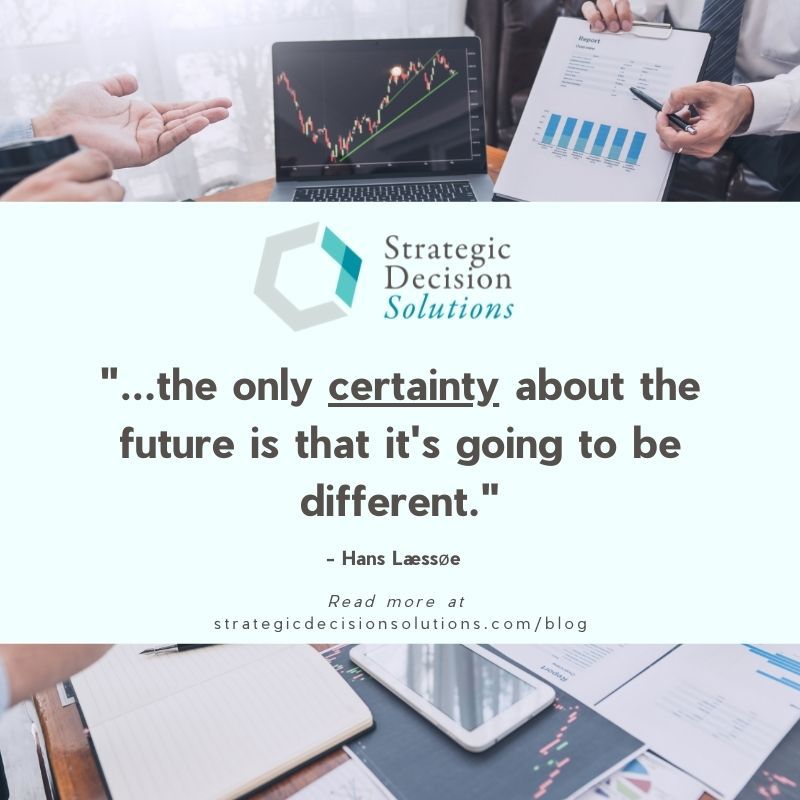Thinking about the long-term is not something we automatically do…after all, with the constant ups and downs and various trip wires out there, we feel that if we make it through the next year or even the next quarter, we can consider our corporate strategy a success.
This mindset can be destructive in the long-term though.
Scenario planning is a valuable tool for understanding short-term dependencies and consequences of a particular goal, be it for a project, a new product launch, or marketing campaign. While it’s an important topic I discuss on a regular basis, scenario planning takes a more short-term outlook.
But in order to truly know if a particular strategy is the right fit, you have to address questions like what the business environment will look like 10, 20, 30 years from now and will our strategy and targets be relevant for the future we’re facing.
A recent discussion with Hans Læssøe dives into the tool of strategic scenarios as a way for understanding and preparing for long-term uncertainty. Hans refers to it as uncertainty because any possible issues can be risks or opportunities depending on how the company decides to respond.
Although I’ve discussed methods like risk sensing and signpost analysis, Hans’ method is by far the most comprehensive for understanding the proper risk response for long-term issues.
Hans outlines the strategic scenarios method in his book Prepare to Dare (pgs. 118-130) but the interview contains additional commentary that can be helpful for understanding this method.
Below is a list of points we discuss for easy reference.
- What is strategic scenario planning? (0:40)
- Why do you think people should use strategic scenario planning? (1:58)
- What preparations do strategic scenario planning sessions require? (2:56)
- What process(es) people should expect during strategic scenario planning? (8:20)
- Using the “2×2 method” for understanding drivers of uncertainty. (10:40)
- Understanding what each of the scenarios mean to your company. (12:58)
- Triggering imagination to identify “issues” that your current strategy hasn’t accounted for. (14:52)
- Assessing identified issues through modeling. (16:40)
- Bridging the gap between scenarios and your current strategy. (21:40)
- Assigning responsibilities for action items. (24:56)
- With such a long list of to-do items, how do you prioritize? (25:56)
- One potentially huge roadblock to a successful strategic scenario session. (29:30)
- Including the Board in the strategic scenarios process. (31:39)
- Origins of Hans’ process. (33:20)
- Who should be involved in a strategic scenario session? (34:40)
- What would be your 3-sentence description that people should expect as the outcome? (36:35)
- Key takeaways. (37:45)
I want to take a moment to thank Hans for helping us understand methods we can use to understand long-term uncertainties. As he says in the beginning of our discussion,

I look forward to future conversations with Hans on this and other important risk topics.
Does your company examine long-term scenarios that could impact goals and objectives?
To share your insights on the importance of understanding long-term uncertainties, please feel free to leave a comment below or join the conversation on LinkedIn.
And if your company is struggling to meet goals and doesn’t know where to start, please don’t hesitate to reach out to schedule a one-on-one conversation to better understand specific issues and develop an approach that will work for your company’s needs.








